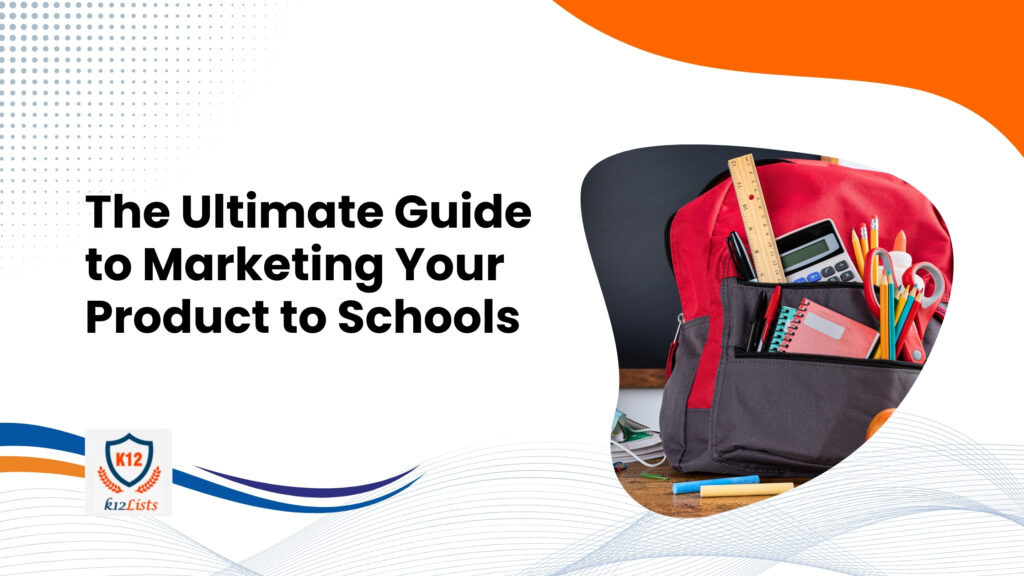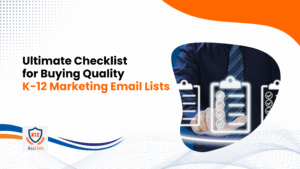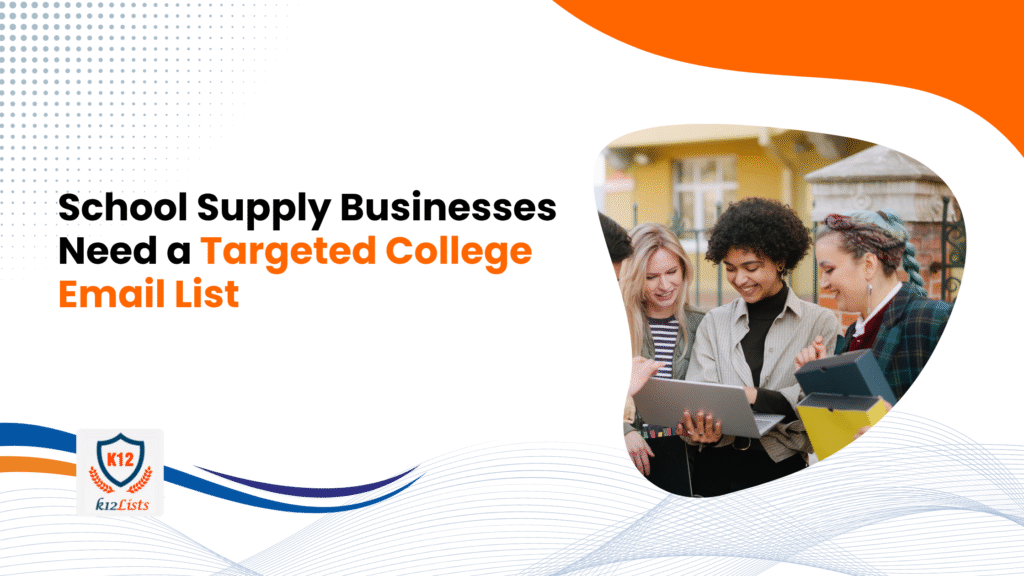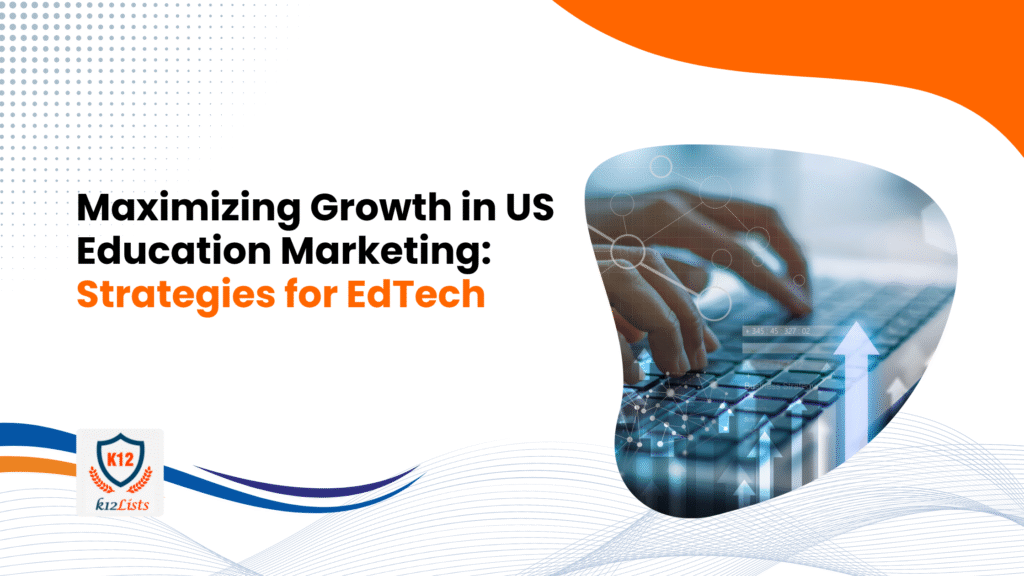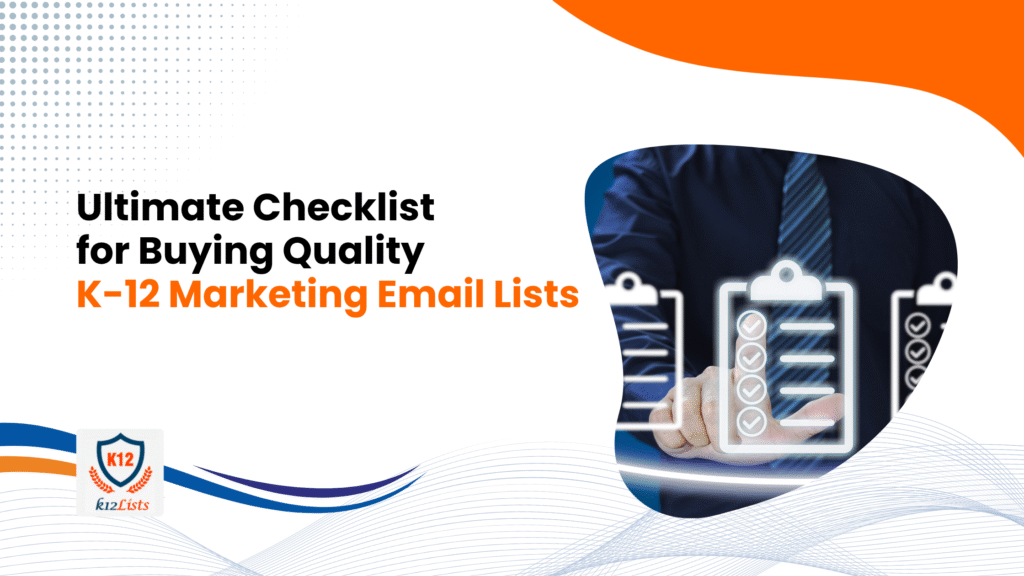A comprehensive K-12 marketing strategy to help you sell to schools, reach key decision-makers, and generate high-quality leads.
Introduction:
Navigating the complex purchasing landscape of K-12 schools can be a daunting challenge. Schools, colleges, and districts worldwide operate under unique processes shaped by budgets, timelines, and multiple decision-makers-a maze that can be overwhelming to marketers. To successfully Market Your Product in this sector requires more than a generic sales pitch; it demands an understanding of the education sales cycle, the key players involved, and strategic outreach methods.
This guide will walk you through everything from decoding the K-12 education market landscape to crafting an effective EdTech marketing strategy, navigating the school purchasing process, and making the most out of email and other marketing channels. A critical foundation of your outreach is a high-quality, compliant email list of educators and decision-makers – a tool you’ll learn to leverage for maximizing impact.
Why is Selling to Educational Institutions so Different?
Selling to K-12 schools presents unique challenges not commonly found in other sectors. Educational institutions involve multi-layered procurement processes, budget constraints often governed by public funding cycles, and a longer decision-making timeline extending over months. Additionally, the stakeholders involved from teachers and principals to superintendents and school board members all hold diverse priorities. This makes the sales cycle complex and relationship-driven.
Across different countries, these dynamics shift—varying regulations, cultures, and educational priorities affect how schools purchase products. Building an awareness of these differences helps marketers tailor their approach effectively.
Key players typically include:
- Teachers and curriculum coordinators who identify needs
- Principals who provide site-level approval
- District administrators like superintendents and purchasing directors who approve budgets
- School board members with final authority on significant purchases
Understanding these roles and their influence is essential for crafting targeted messages that resonate with each group.
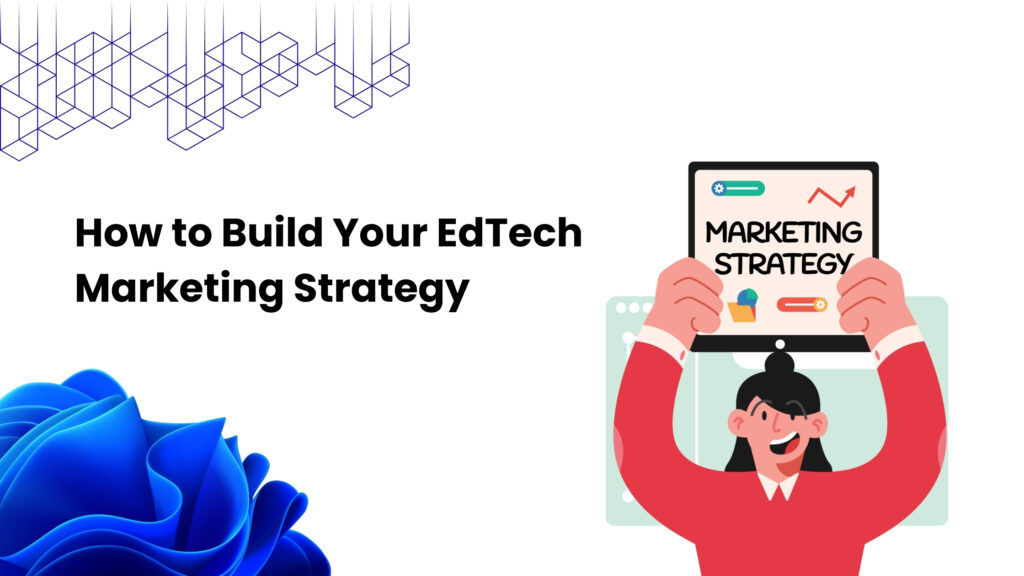
How to Build Your EdTech Marketing Strategy
A successful EdTech marketing strategy starts with a clear understanding of your audience, your unique value proposition, and your overall sales approach. By aligning these elements, you can effectively market your product to schools, ensuring your message resonates with decision-makers and drives meaningful engagement.
Defining Your Audience
Segment your audience thoughtfully. Educators, IT directors, department heads, administrators, and district officials each have different needs, pain points, and decision criteria. Tailoring messaging for each group increases relevance and engagement.
Your Value Proposition
Why should schools care about your product? Focus on how it improves learning outcomes, enhances teacher effectiveness, engages students, or reduces administrative burdens. Support your claims with data, testimonials, and case studies.
Sales Strategy for EdTech Companies
EdTech sales rely heavily on trust and long-term relationships. Adopt a multi-tiered outreach plan targeting different stakeholders with relevant messaging. For example, technical details and scalability resonate with IT directors, while educational benefits appeal to teachers and curriculum leaders. Consider incentive plans that reward renewals and subscriptions to build recurring revenue streams.
Your Foundation: The Power of a High-Quality Email List
Your marketing efforts must be built on solid foundations—chief among them, a robust, accurate, and compliant email list tailored to K-12 educators and decision-makers globally. Schools often have strict privacy rules and compliance mandates, making list hygiene and verification vital to maintaining deliverability and trust.
A quality email list allows targeted outreach, segmentation by role or geography, and ensures your messages reach the right inboxes. Link your campaign efforts to data verification techniques and maintain ongoing hygiene to boost response rates and avoid spam traps.
Using an email list as part of a broader strategy integrates well with content marketing, social media, and event follow-ups.
Mastering the School Purchasing Process
Schools typically operate on a distinct buying cycle influenced by academic calendars and budget timelines. Understanding this sales cycle can help align your marketing and sales efforts for success.
Four phases characterize the K-12 buying cycle:
- Needs Assessment and Planning (May to July): Schools assess needs and establish budgets. Focus on thought leadership and educational content that positions your product as a solution to identified issues.
- Information Gathering and Vendor Selection (August to October): Decision-makers research options. Boost SEO and provide rich content like case studies and whitepapers to build trust.
- Evaluation and Approval (November to January): Detailed evaluation, demos, and procurement processes occur. Provide timely responses and technical details.
- Purchase and Implementation (February to April): Final contracts and onboarding take place.
Patience and persistence are key, as purchases often require multiple approvals, bids, and compliance checks. Offering easy appointment-setting tips and relationship-building strategies can shorten this lengthy cycle.
Beyond Email: The Most Effective Channels for Marketing to Schools
- Email Marketing remains potent for cold outreach and nurturing with newsletters focused on educational needs.
- Content Marketing builds trust over time through blogs, case studies, and whitepapers. Content that answers pressing questions or aligns with state standards is especially valuable.
- Social Media channels like LinkedIn connect you with education professionals. Educator groups and forums are also fertile ground for engagement.
- Educational Conferences and Events offer unparalleled face-to-face relationship-building opportunities, where live demos and direct conversations spike interest and trust.
A mix of channels, well-integrated and aligned with the sales cycle, drives optimal results.
Top Mistakes When Selling to Schools and How to Fix Them
- Assuming a Single Decision-Maker: Schools involve many stakeholders; ignoring this leads to missed opportunities. Map and engage the influencer network.
- Using Generic Messaging: Irrelevant or non-personalized pitches reduce engagement. Tailor content to specific roles and needs.
- Neglecting Compliance and Data Hygiene: Low-quality or non-compliant email lists ruin deliverability and brand reputation.
- Overlooking Timing and the Sales Cycle: Failing to align marketing activities with the school year and procurement phases results in lost momentum.
Avoiding these mistakes preserves resources and enhances your sales effectiveness.
Conclusion
Successfully marketing to K-12 schools demands a deep understanding of the sector’s unique landscape, a well-crafted strategy rooted in audience insight and trust, and the savvy use of data and communication channels. Embrace a patient, multi-touch approach aligned with the school buying cycle and be prepared to engage multiple decision-makers with relevant content.
Ready to reach the right people in education? Contact us to get your customized K-12 email list today and start building the connections that will drive your product’s success in schools.
Frequently Asked Questions (FAQ’s)
The most effective time to market to schools is often during the summer months when teachers and administrators have more time to review new products. However, some key decision-makers make budget and curriculum decisions year-round. Consistent, year-round outreach is key.
Finding accurate and compliant contact information for specific school administrators can be challenging. Many marketers use a specialized email list provider that compiles, verifies, and maintains lists of school officials to ensure high accuracy and deliverability.
The school procurement process is the official procedure that schools and districts follow to purchase products and services. It often involves multiple decision-makers, budget reviews, and formal approvals, which is why it can take longer than a typical B2B sales cycle.
While you can use a general list, it’s not recommended. A general B2B list often lacks the specific segmentation needed to effectively reach educators. A specialized education email list is built to target key roles like principals, department heads, and teachers, leading to much higher conversion rates.
To stand out, your email’s subject line and content must be highly relevant and personalized. Focus on providing value, such as free resources or helpful information, rather than a hard sell. Using an email list that includes specific job titles and subject areas allows you to tailor your message precisely.

